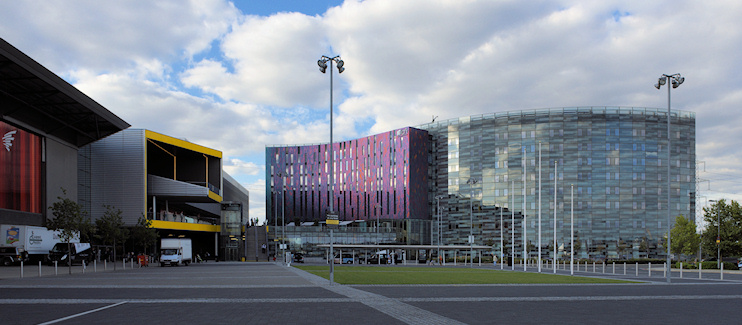Custom House
Custom House, Newham
A redeveloping dockland locality squeezed between Canning Town and Beckton, temporarily home to an NHS Nightingale hospital turned vaccination centre
![]()
The locality takes its name from a Port of London building that was properly called the Dock Directors’ Access Centre, which stood next to the station beside the Royal Victoria Dock.
Following the establishment of the Royal Docks, the need for accompanying housing encouraged the brisk growth of Custom House in the 1880s.
The area became notorious for its poverty and slum conditions and its housing was almost entirely replaced by council flats after the Second World War, notably in the form of the Freemasons estate. Among the estate’s nine tower blocks was Ronan Point, which partially collapsed after a gas explosion in 1968, killing four people.
The Ronan Point disaster has been called ‘modern architecture’s Titanic’ and it had a pivotal influence on subsequent designs for tall buildings. It has even been suggested that the effects of the terrorist attack on the World Trade Centre’s twin towers might have been less catastrophic had lessons from Ronan Point been incorporated into their construction.
Custom House was the home of West Ham stadium, a speedway and greyhound track with a capacity of over 100,000, replaced by a maze of curling cul-de-sacs after its demolition in the 1970s. This part of Custom House is also known as West Beckton and many of its streets are named after former speedway champions.
The Admiral’s Reach development, completed in 1993 by Barratt, now occupies the site of the Freemasons estate.
The Dock Directors’ Access Centre was refurbished in 1995 – and then demolished soon afterwards. (That was the kind of thing the London Docklands Development Corporation did in those days.)

The LDDC’s destructive change of mind was the consequence a desire to create space for the ExCel (later ExCeL) exhibition and conference centre, which opened in 2000. The centre has 90,000 square metres of event space on a 100-acre site north of the Royal Victoria Dock. The £250 million construction project was the largest in east London since Canary Wharf. During the first wave of the covid-19 pandemic the ExCeL was converted into the country’s first and largest NHS Nightingale hospital – but was never much used, except as a vaccination hub in 2021.
Three DLR stations serve the site: Prince Regent and Custom House for ExCeL’s eastern and western entrances and Royal Victoria for the peripheral facilities further west.
Custom House station was closed for almost the whole of 2017 to increase its capacity by 50 per cent and make other improvements in advance of the arrival of the Elizabeth line (Crossrail).
The ward of Custom House has a significant black African community, mainly speaking Yoruba, Twi and Swahili. Fifteen per cent of homes in the ward are lone parent households with dependent children.
According to young footballer Deese Kasinga, who spent most of his teenage years living here, “Custom’s like, as rough as you can get … crime rate crazy, it’s a living warzone.” [source: Academy Stories: Deese Kasinga, BBC Sport website, 4 March 2021.] In the opinion of Hidden London, this may be a slight exaggeration – but others have said similar things about the wider local area.
The actor Danny Dyer grew up in Custom House and his ancestors were East Londoners as far back as it is possible to trace.
Postal district: E16
Population: 13,411 (2011 census)
Station: Docklands Light Railway, Beckton branch, and Elizabeth line (zone 3)
